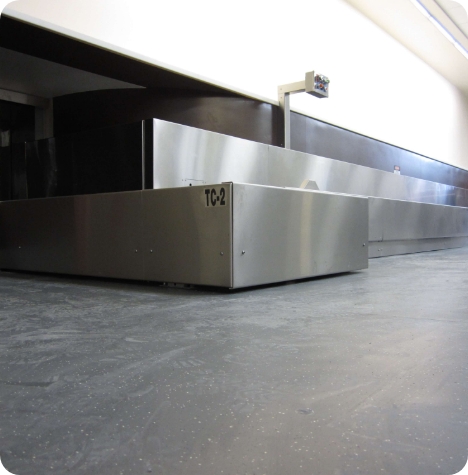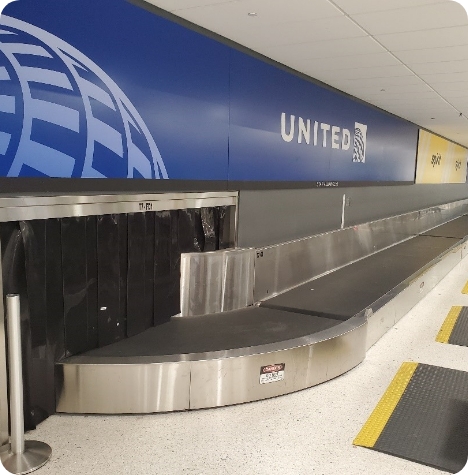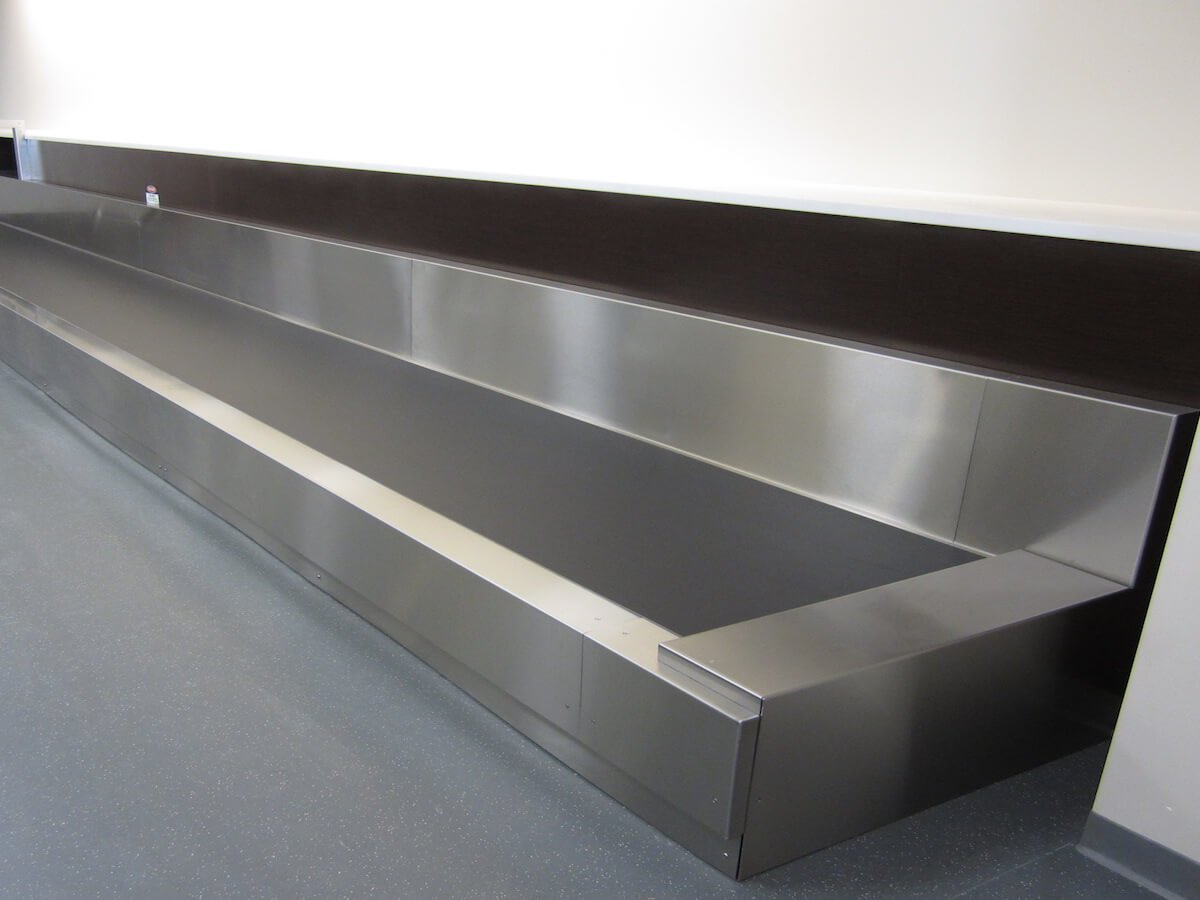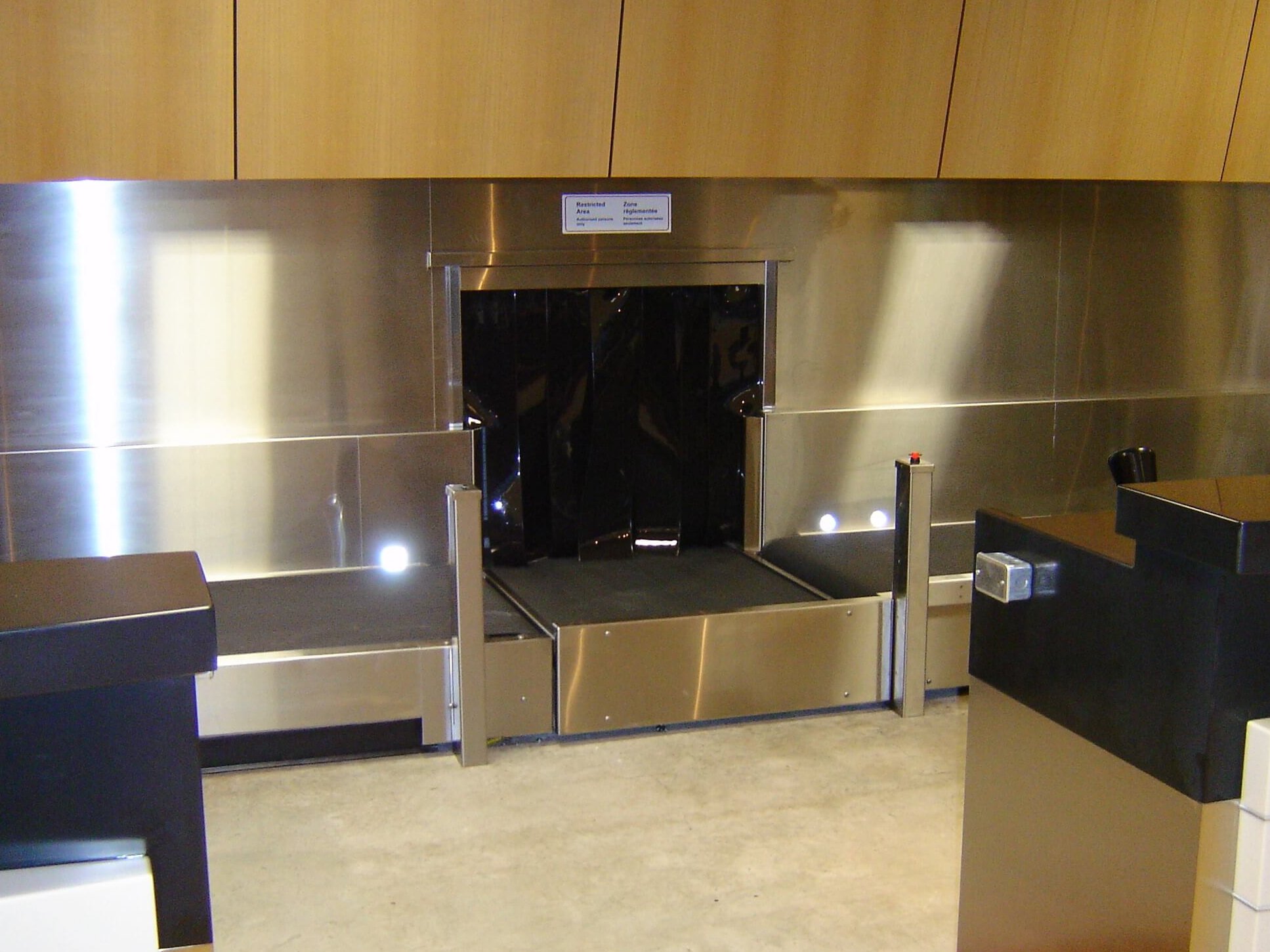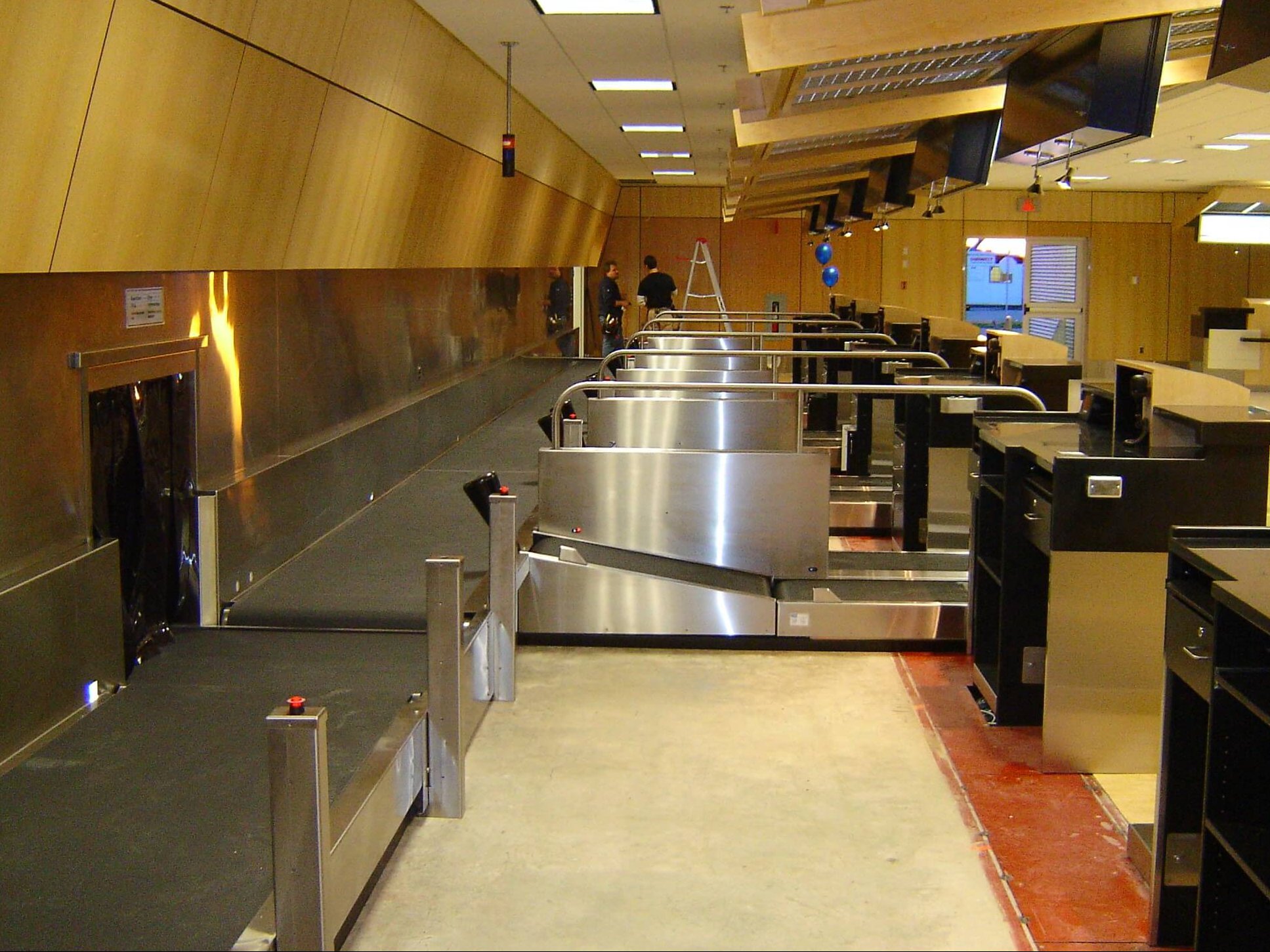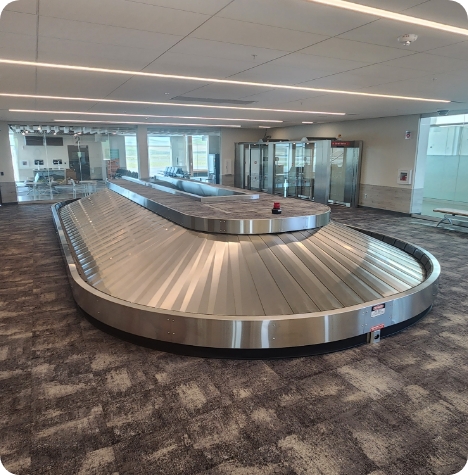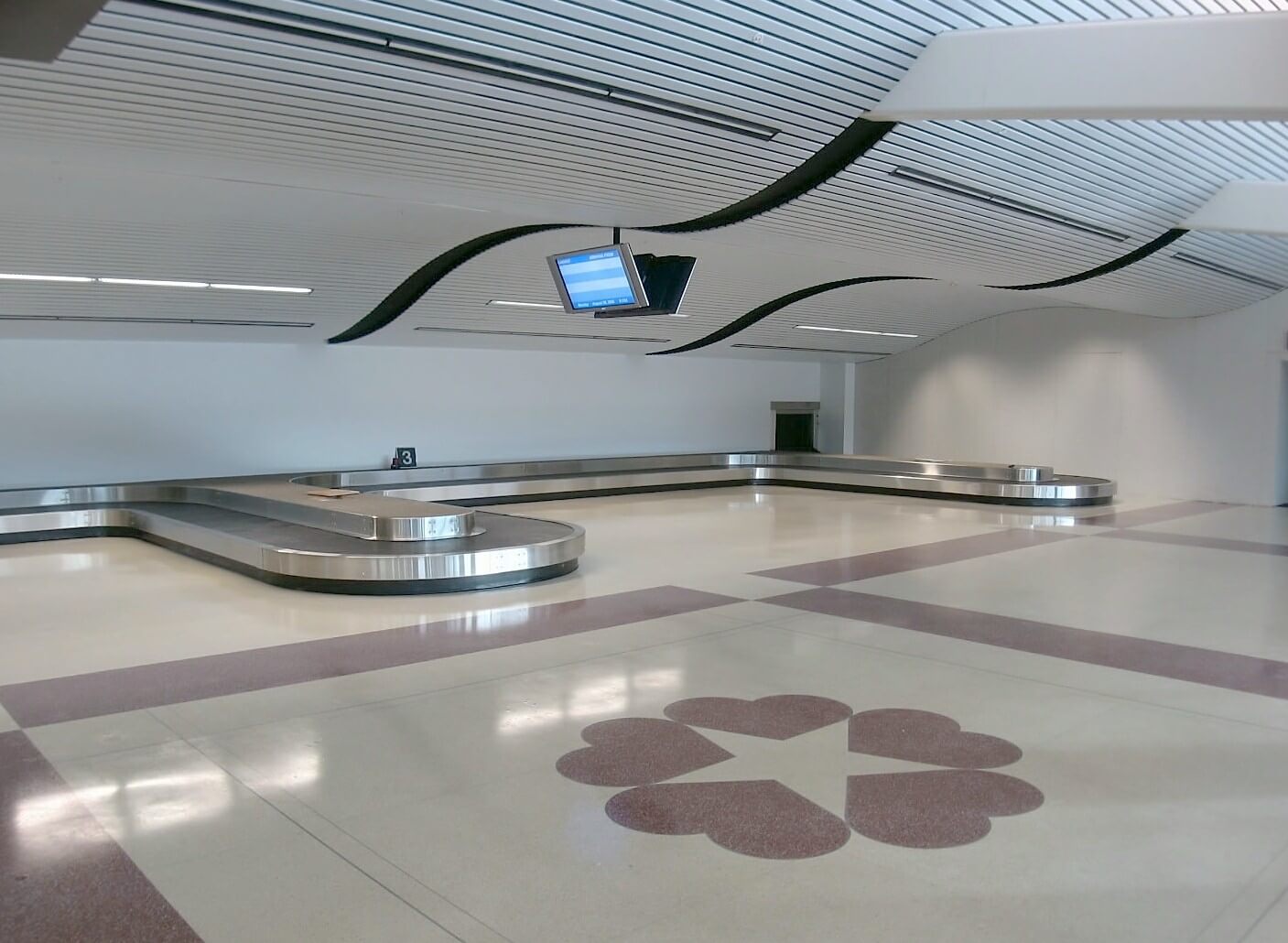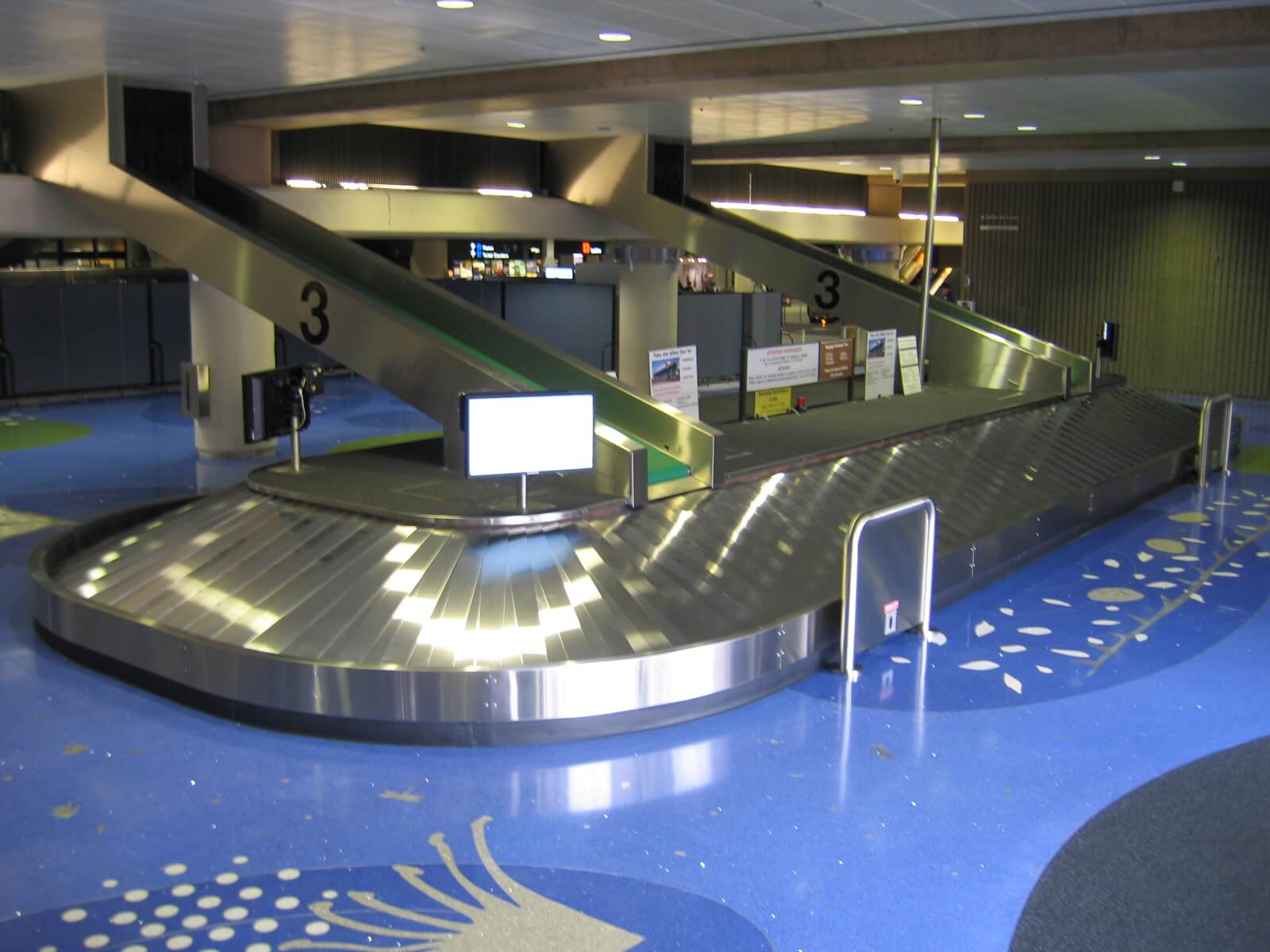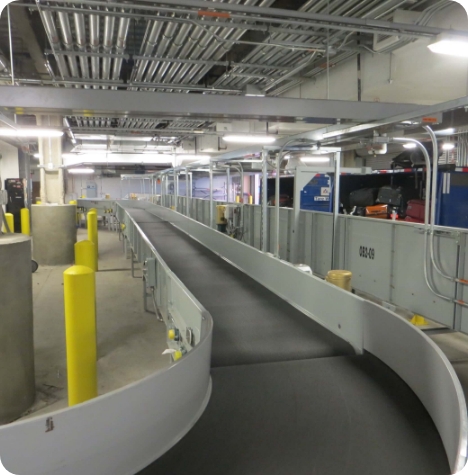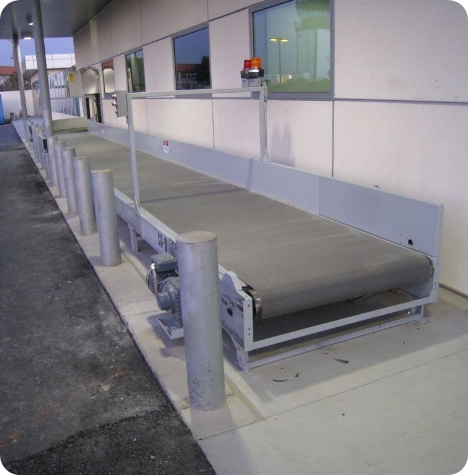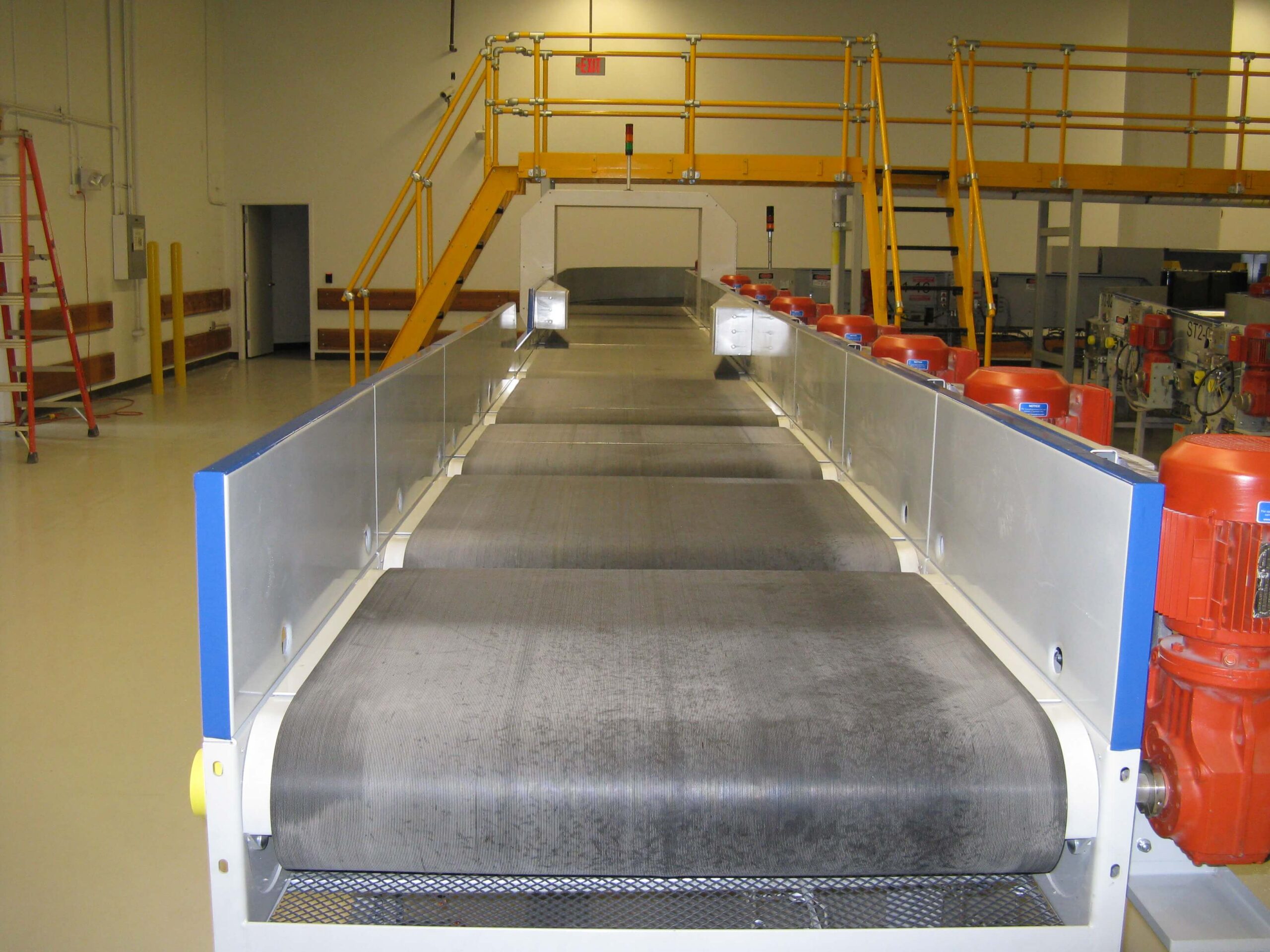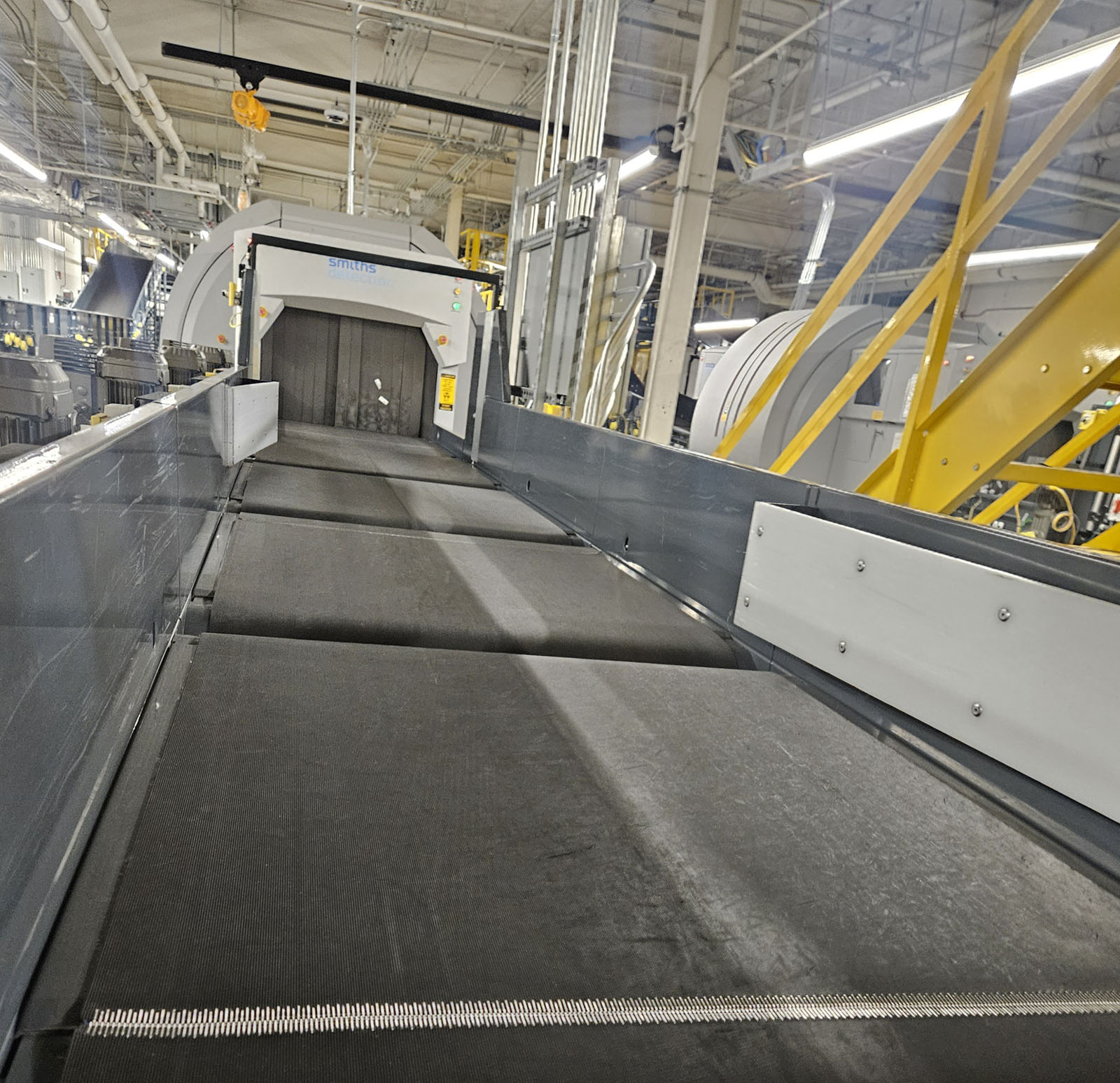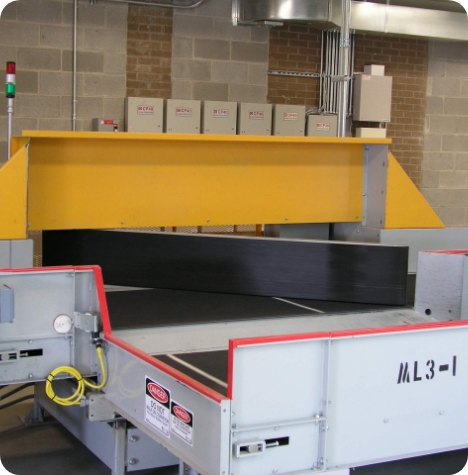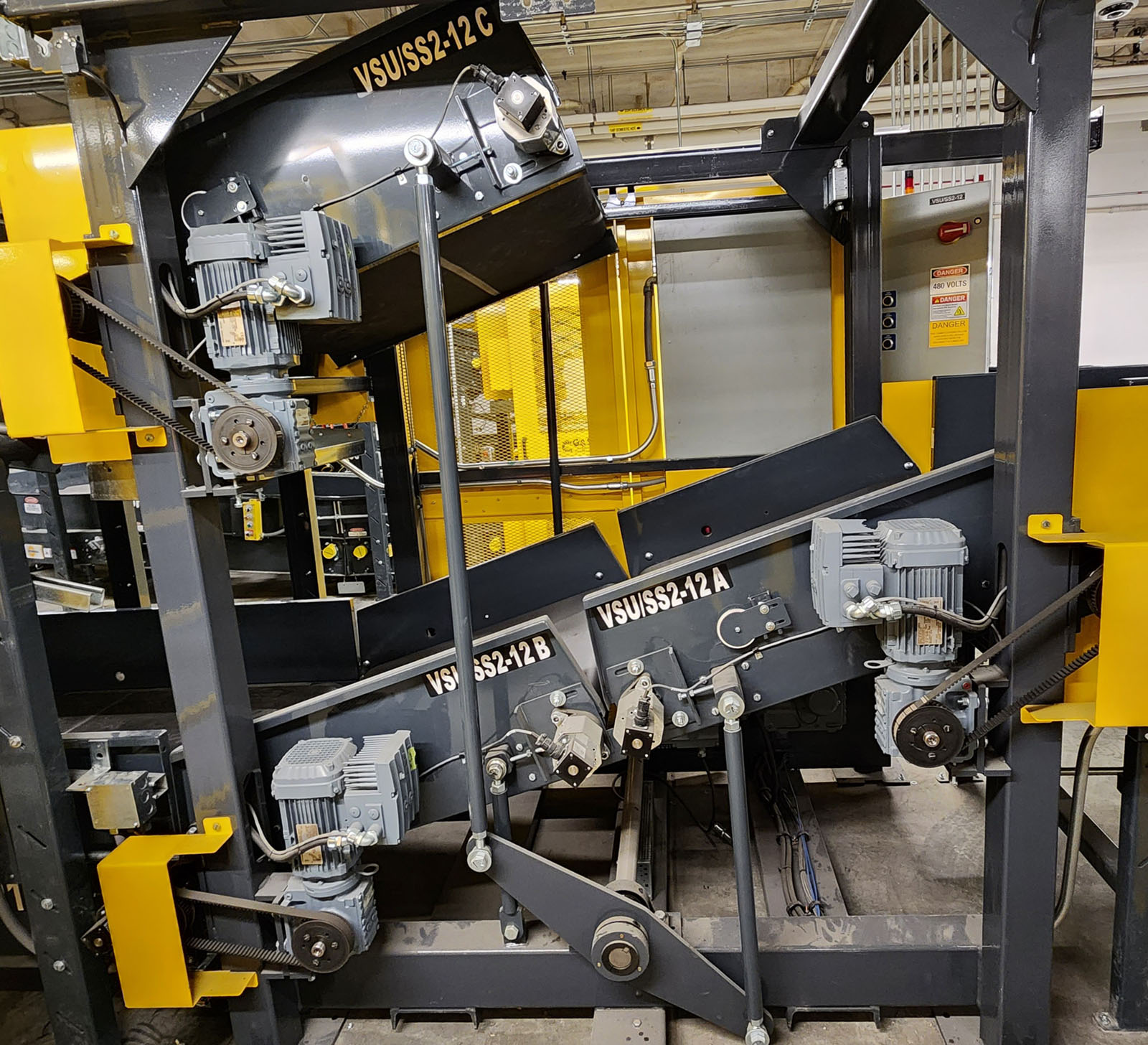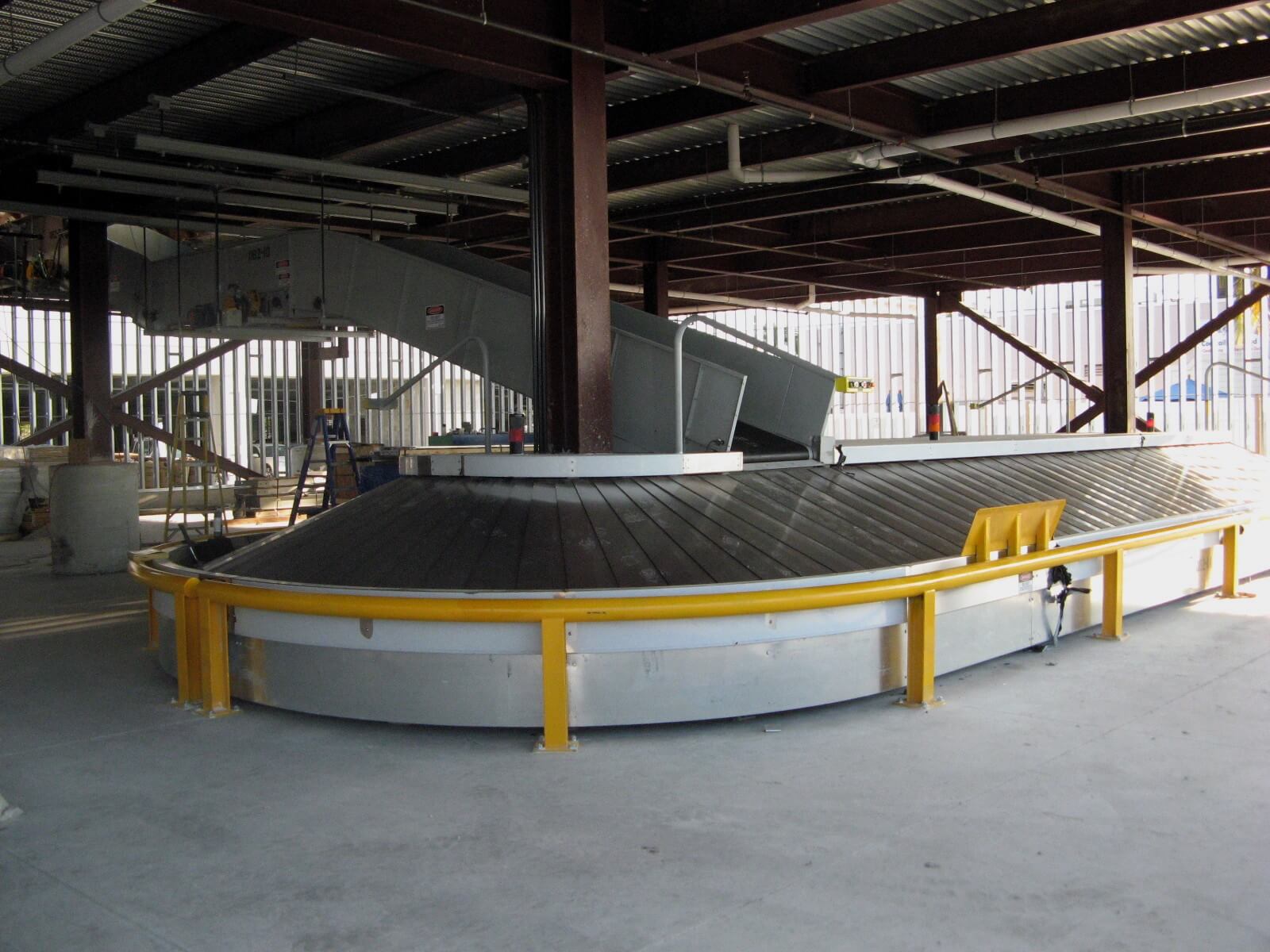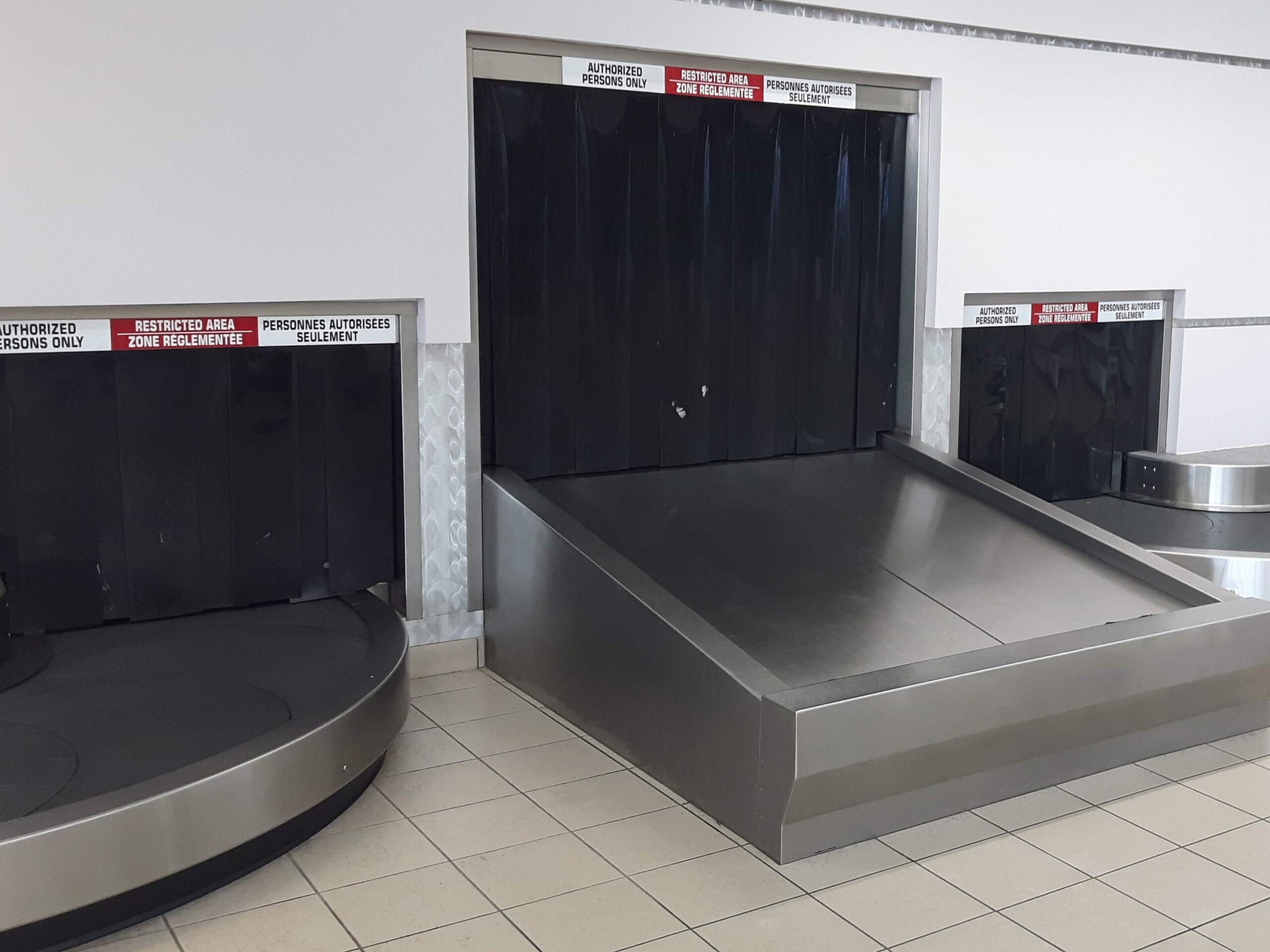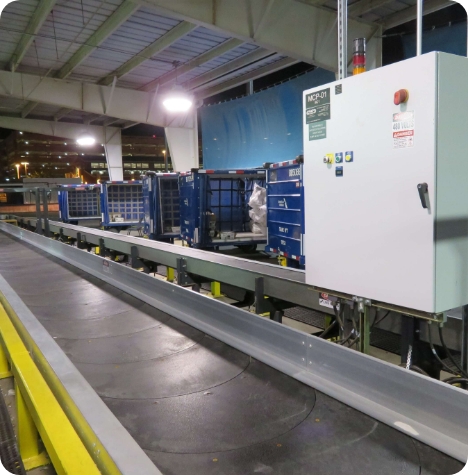Check-in Solutions
The check-in conveyor is ideal for transferring outbound baggage efficiently and effectively from the public ticket-counter area to airside operations. Designed with workplace ergonomics and aesthetics in mind, this low profile conveyor can either be manually loaded as a standalone unit, or automatically fed when integrated with any number of scale conveyor combinations.
The check-in conveyor consists of a drive section, one or more slider bed modules, and a tail section, all of which are finished with high quality stainless steel. Offered in standard widths, the modular design allows conveyor lengths to be built to site-specific dimensions.
Designed with flexibility in mind, this robust and reliable design meets or exceeds all industry standards, while perfectly complimenting ticket-counter operations.
Carousels / Baggage Claim & Make-Up
Incline Carousel
The incline carousel is a high capacity, sloping-face, baggage conveyor which features a number of overlapping flites that are linked together, providing an endless, re-circulating conveyor surface. This unit is suitable for baggage claim and / or baggage make-up functions in high-density airports.
Pallet Loop Carousel
The pallet loop carousel features a recirculating loop of crescent shaped pallets inked together, providing an endless, articulating conveyor surface which can be configured to many shapes.
Normally operating at a speed of 90 feet per minute, Baggage claim conveyors are capable of traveling in either a clockwise or counterclockwise direction. Loading of the unit can be achieved by feeding baggage from above or below the center of the device at any point along the upper perimeter of the conveying surface. Manufactured with durable materials, finished to the highest standards, and complimented with leading-edge mechanical and electrical components, this robust and reliable design meets or exceeds all industry standards.
General Transport
The general transport conveyor is designed to move baggage quickly through today’s intricate airport configurations. Generally unseen by the public, these conveyors smoothly and reliably transport baggage through the terminal to make-up units for destination batches. Stand alone, or combined with power curves and sortation devices, baggage can travel effectively and efficiently to meet or exceed the demands of any airport.
The design of the G&S Airport Conveyor General Transport conveyor meets or exceeds all industry standards. The modular component design allows for complete flexibility and versatility in meeting the needs of simple baggage transfers through to complex explosive-detection and sortation systems.
The modular components consist of a drive section, one or more slider bed modules, and a tail section. To accommodate changes in elevation, a standard angle knuckle module can be added. General transport conveyors can transfer bags both horizontally and on inclines or declines up to 23°. Each component is painted or powder coated in a machine grey color. The resulting finish exhibits exceptional durability and appearance.
Queue Conveyor
The queue conveyor is ideal for indexing, queuing, or separating baggage in systems that require flow management. This self contained, independent conveyor can either be placed in-line throughout merging and sortation systems, or can stand alone as a short conveyor.
Sortation Devices
Vertical Sortation Device (VSD)
The G&S Vertical Sortation Device (VSD) is a gentle, effective means of diverting or merging baggage in airport baggage handling systems. Typically preceded by one or more queue conveyors that control flow and optimize baggage spacing, the VSD redirects baggage in a vertical orientation, thus accommodating systems where space saving solutions are required
Single Paddle Diverter (SPD)
The SPD sortation device is a gentle and efficient means of diverting baggage in airport baggage screening systems. The SPD redirects baggage effectively from the main line to a secondary line by means of a vertically oriented single paddle conveyor that is designed to pivot towards a discharge chute, forming a powered deflecting face oriented 45° to baggage flow. The unit is typically preceded by a series of queue conveyors, which control flow and optimize baggage spacing.
Horizontal Sortation Device (HSD)
The HSD redirects baggage effectively from the main line to a secondary line using two paddles designed to automatically pivot towards each other, aligning to form a powered deflecting face oriented 45° to baggage flow. Baggage is redirected onto a discharge chute and removed by out feed conveyors oriented at 45°, 90°, or 180° to the main line flow. To assist in flow control and to optimize baggage spacing, each HSD unit is typically preceded by a series of queue conveyors.
Tip Chute
Ideal for re-inserting or merging baggage where one conveyor is positioned vertically above another. It is also suitable for loading baggage make-up devices such as the pallet loop conveyor.
Auxiliary Equipment
Guardrail
G&S Airport Conveyor’s distinct ergonomically friendly guardrail provides durable, rugged protection for exposed sections of any conveyor system. The flexible, modular design allows the guardrail to closely follow the contour of typical conveyor configurations.
Our unique modular system provides a narrow profile guardrail that positions baggage handlers closer to conveyors than typical guardrail configurations. Also, the protective barrier is designed so all components can be easily removed and replaced.
Each section of the guardrail is comprised of heavy gauge 8” (203mm) channel horizontal members and vertical supports constructed from 4” (102mm) schedule 40 pipe.
Fire / Security Doors
Fire and security doors normally consist of a motorized, roll-up, shutter-type steel door, and are typically installed in two locations:
- Where baggage conveyors pass through wall openings between public and nonpublic
areas, requiring a partition to maintain airport security. - Where baggage conveyors pass through fire-rated walls.
Manufactured in various heights and widths, these doors are available in stainless, primed or galvanized steel finish. Fire and security doors are typically integrated with conveyor operations, sequenced to open and close as conveyors start and stop, ensuring airport security and / or fire-protection when not in service.
Draft Curtains
Draft curtains are typically mounted in wall openings where baggage conveyors pass from public areas to non-public areas.
Two rows of overlapping, black vinyl strips are fixed to the top of the wall opening using a metal frame. This arrangement allows baggage to pass through easily, while obscuring public view into air-side operations and preventing airflow exchange between the two areas.
Draft curtains are a necessary barrier in typical conveyor operations that provide a pleasing aesthetic finish to public-viewed wall openings.
Baggage Inspection Table
Electrical Controls
G&S Airport Conveyor believes that a comprehensive conveyor control system is vital to a reliable and efficient automated baggage system.
Whether a system is newly installed or is integrated with existing equipment, our controls group works closely with our customers to design and build a conveyor control system matching client requirements.
